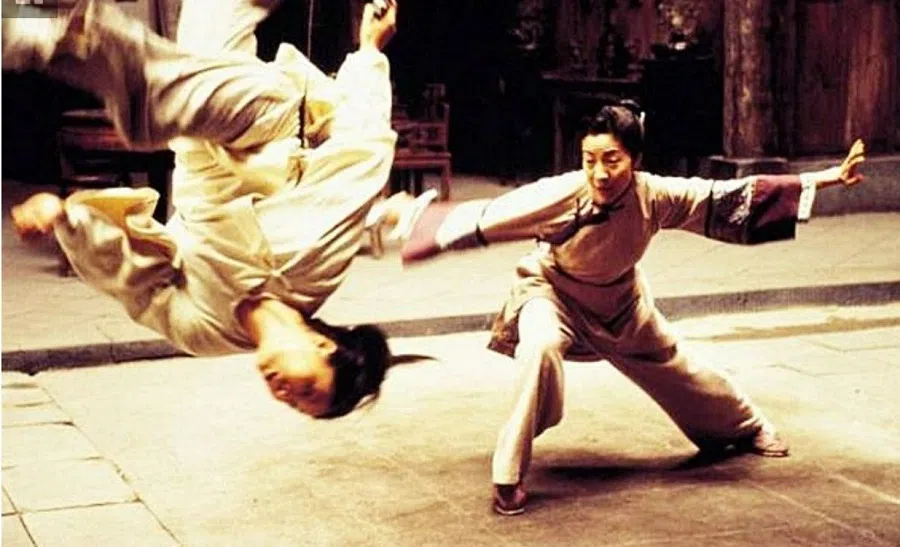Why Ne Zha 2 wasn’t a global smash
While Ne Zha 2 has earned a place in the history book, Chinese films still face persistent difficulty in winning over global audiences.

(By Caixin journalists Guan Cong and Wang Xintong)
While the record-setting box office run of Ne Zha 2 has earned the film its place in the history books, its overseas earnings are tiny compared with its domestic takings, highlighting the persistent difficulty Chinese films face winning over global audiences.
As of Thursday (10 April) morning, the animated blockbuster had grossed US$2.15 billion, but only US$60 million — or less than 3% — came from outside the Chinese mainland, according to box office tracker Maoyan. It currently sits in fifth place on the all-time global box office chart, behind the two Avatar movies, Avengers: Endgame, and Titanic.
Since its January release on the Chinese mainland, Ne Zha 2 has become the highest-grossing animated film ever and the first non-Hollywood title to earn over US$2 billion.
Ne Zha 2 was released in Chinese with English subtitles, which along with its heavy use of Taoist cultural references, has made it less accessible to foreign audiences.
Based on Chinese mythology, the film follows Ne Zha — a boy born as a demon incarnate who rebels against his fate — and has become a symbol of national pride within China.
“Ne Zha 2 is popular domestically because Chinese audiences understand the social strata and environments each character represents. But Western audiences may not connect with it,” a film industry insider told Caixin. “Hollywood already dominates large-scale visual effects films, leaving little room for Chinese productions to offer something new.”

For instance, Captain America: Brave New World — which was released in North America on the same day as Ne Zha 2 — had raked in US$412 million as of Thursday (10 April) morning, with more than half coming from markets outside North America, data from Maoyan showed.
Ne Zha 2 was released in Chinese with English subtitles, which along with its heavy use of Taoist cultural references, has made it less accessible to foreign audiences. Its English-dubbed version, still in progress, is being handled by the same team that dubbed smash hit video game Black Myth: Wukong in collaboration with a Hollywood translation studio.
Some fans of Ne Zha 2 have also accused the animated film’s overseas distributors of inadequate promotional efforts.
The situation facing Chinese films abroad has not fundamentally changed over the years, the industry insider said. Films with strong local characteristics often struggle internationally due to differences in aesthetic preferences. A film’s success also depends on production quality and whether the cast includes stars recognisable to international audiences, the insider added.
Among Chinese films released overseas, Ne Zha 2 currently ranks 10th in terms of box office revenue, Maoyan data showed. The top nine are mostly martial arts films, a genre that has historically proven popular among international audiences.

Oscar-winning action film Crouching Tiger, Hidden Dragon sits at the top spot with US$213 million in overseas takings. Before the film was released in 2000, at least a few of its stars — like Michelle Yeoh and Chow Yun-fat — had gained some degree of international recognition. The film was produced by Columbia Pictures, a subsidiary of Hollywood major Sony Pictures Entertainment Inc.
Some fans of Ne Zha 2 have also accused the animated film’s overseas distributors of inadequate promotional efforts. CMC Corp. — which handled the film’s release in North America, Australia and New Zealand — blamed insufficient preparation time and weak media engagement, according to a statement published on 11 March that was later deleted.
... the domestic market alone is sufficient to generate significant revenue, meeting filmmakers’ expectations for commercial success. As a result, overseas distribution is not an urgent priority for them.
For many Chinese-language movie distributors like CMC, securing screenings is a major challenge overseas. When Ne Zha 2 and Captain America: Brave New World were released in North America on 14 February, the Marvel film secured significantly more theatre screenings, according to the state-run Xinhua News Agency, citing industry data.
Unlike Chinese theatres that follow official directives and typically release films simultaneously nationwide, theatres in countries like the US prioritise profitability when scheduling films, sometimes allocating screens based on pre-existing agreements with major studios. Distributors must negotiate individually with each theatre chain or independent cinema for screening slots.

Additionally, most Chinese producers prioritise domestic markets, only considering overseas releases after evaluating a film’s local performance, Caixin has learned. By contrast, producers of globally targeted films plan for international distribution from the outset, tailoring both content and casting accordingly. But “many (Chinese) companies now recognise the need to engage overseas distributors sooner”, the film industry insider said.
“Chinese cinema has enjoyed the growth dividend of a single large market over the past decade,” said Ma Ruiqing, an associate professor at the Sidney Poitier New American Film School of Arizona State University, explaining that the domestic market alone is sufficient to generate significant revenue, meeting filmmakers’ expectations for commercial success. As a result, overseas distribution is not an urgent priority for them. Most commercial films also do not consider popularity in the overseas market as a core factor in content design, Ma added.
Despite these difficulties, animation is seen as having potential to do well overseas as it’s more accessible and appeals to broader audiences. Animated releases have gained increasing market share in China and the US, accounting for 16% and 24% of respective box office revenues last year, according to CMC Vice President Ying Xujun.
This article was first published by Caixin Global as “Analysis: Why ‘Ne Zha 2’ Wasn’t a Global Smash”. Caixin Global is one of the most respected sources for macroeconomic, financial and business news and information about China.



![[Big read] Love is hard to find for millions of rural Chinese men](https://cassette.sphdigital.com.sg/image/thinkchina/16fb62fbcf055b710e38d7679f82264ad682ce8b45542008afeb14d369a94399)
![[Big read] China’s 10 trillion RMB debt clean-up falls short](https://cassette.sphdigital.com.sg/image/thinkchina/d08cfc72b13782693c25f2fcbf886fa7673723efca260881e7086211b082e66c)
